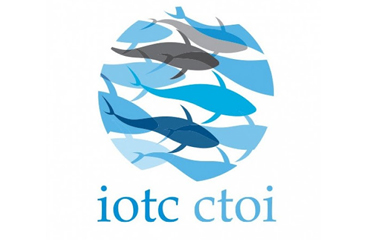The Indian Ocean Tuna Commission (IOTC) Scientific Committee has published a new report that provides results on the yellowfin tuna stock assessment in the Indian Ocean. The report shows the stock is overfished and will require a catch reduction of at least 30 percent.
The report is the first issued by the IOTC Scientific Committee since 2018 and includes projections for reasonable likelihood of stock recovery by 2030 if the 30 percent catch reduction is implemented. That means a catch limit of about 301,000 metric tons (MT) – almost 130,000 MT less than was caught in 2020.
“Now that we have a new, more reliable stock assessment for Indian Ocean yellowfin tuna, it is clear that a catch reduction of at least 30 percent from 2020 levels is needed to be confident in our chances of stock recovery,” Callum Roberts, a professor of Marine Conservation at the University of Exeter and chief scientific advisor at Blue Marine Foundation, said. “A 50-50 chance of saving the stock is not good enough – no better than a coin flip on yellowfin recovery. Healthy oceans need healthy fish populations.”
In 2015, the IOTC Scientific Committee recommended a reduction of catches by 20 percent to allow stock recovery. Since then, catches have increased by more than 25,000 MT. The new stock assessment determined a new maximum sustainable yield (MSY) – the maximum catch that can be extracted from a stock without causing the population to crash. The MSY of yellowfin stock is estimated at 54,000 MT less than previously thought, demonstrating the impacts of overfishing on yellowfin populations.
In previous years, the IOTC has issued uncertain management advice due to “critical errors” within the scientific committee’s stock projections, preventing new management from being issued in 2021. Due to this, in June 2021, IOTC contracting parties adopted another revision to an already unsuccessful stock rebuilding plan that has been in place for 5 years.
“The IOTC assessment quantifies just what has been lost while members delayed action by blaming a ‘lack of science.’ Now it is crystal clear; strict conservation and management measures are urgently needed to allow Indian Ocean yellowfin to recover within the next decade,” WWF Indian Ocean Tuna Manager Umair Shahid said. “This is the only way parties of the IOTC can meet their commitments to sustainable development and biodiversity goals.”
The largest contributor to yellowfin overfishing is the E.U.’s industrial distant-water purse-seine fleet and has been for as long as the stock has been overfished, according to WWF. Another recent contributor compounding the overfishing has been the IOTC member Oman by increasing its total catch since 2019, it said.
“Now that the science is clear and we know that catches need to be reduced by almost a third, the only remaining barrier to effective conservation is political will,” IPNLF Managing Director Martin Purves said. “Decision-makers must put aside greed and short-term gain to ensure the long-term survival of this important stock. The food security and livelihoods of coastal communities should always surpass the interests of profit-driven operations by distant-water fishing nations.”
IOTC contracting parties will next convene at the 26th Session of the IOTC in May 2022.







